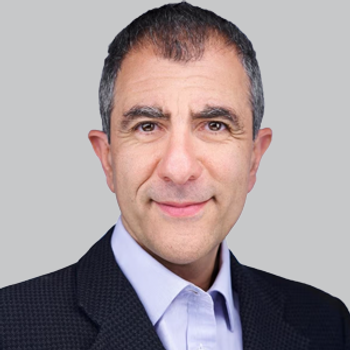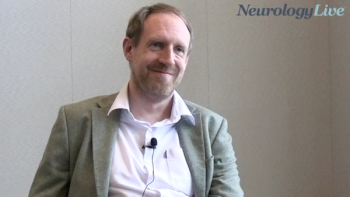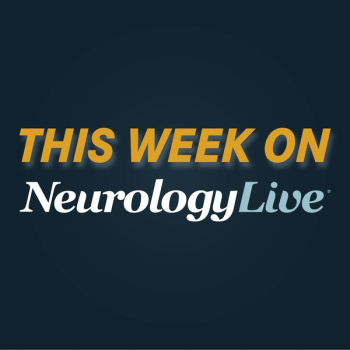
Debate on Glymphatic System Reexamines Sleep’s Role in Alzheimer Disease Pathology
Andrew Varga, MD, PhD, associate professor of medicine at the Icahn School of Medicine at Mount Sinai, provided comment on a featured debate at the 2025 SLEEP Annual Meeting exploring the evolving science behind glymphatic clearance and its potential link to Alzheimer disease.
Long believed to be a sleep-dependent system, the glymphatic network is thought to support the brain’s removal of metabolic waste, including beta amyloid and tau proteins. However, recent data suggest that clearance may occur more efficiently during wakefulness, challenging the idea that sleep is the most important step to preventing neurodegeneration.
At the
NeurologyLive: Can you give a brief overview of your presentation and what drew you to this topic?
Andrew Varga, MD: It starts off with the idea that brain clearance happens during sleep. It's thought to occur through what's called the glymphatic system. There’s this idea that when we enter sleep, neurons shrink in size, which opens up the space around them, the interstitial space, and helps clear waste products, toxins, and things like beta amyloid, which is relevant for Alzheimer disease. People have thought for a while that this clearance is one of the potential functions of sleep, helping to prevent Alzheimer progression. If you have sleep disruptions, like apnea, it could prevent this clearance and lead to amyloid buildup. But a paper came out about a year ago suggesting the opposite: that clearance happens during wakefulness and is reduced during sleep. So that’s really the nature of the debate—whether this is a sleep-active or wake-active system.
Can you explain what happens during normal and abnormal brain cleansing?
Neurons, like all cells, have metabolism and generate waste products. These waste products accumulate in the interstitial space and need to be cleared. The thought is that sleep facilitates that clearance by opening up the space between neurons and helping that flow of the interstitial fluid take away these metabolites and other toxins.
Are there ways to currently assess brain clearance in clinical practice? Is this feasible?
Much of the research that’s been done in this space has been in rodents, where you have more direct access to measuring these things. In humans, we have proxies. You can use certain imaging techniques to try to look at it. I will note that the best imaging techniques to really measure clearance are kind of invasive. It involves essentially introducing a dye into your spinal fluid, so a lumbar drain or puncture, to get access to that space, and then you can look at how the dye circulates. Then you can examine whether sleep disruption enhances or mitigates that flow. There are some other noninvasive markers, but they’re proxies at best. More tools are starting to emerge, but they’re still mostly novel and not widely used clinically.
Are there any ways clinicians or patients can impact the glymphatic system to lower risk of disease?
The most important thing is to get good sleep—both in terms of duration and quality. Address any sleep disorders, especially sleep apnea or insomnia, as they are the most common. Beyond that, things fall into a couple different buckets. Pharmacologically, we can enhance slow wave sleep, the stage of deepest non-REM sleep believed to support clearance, with certain medications, though we don’t yet know if they specifically enhance clearance in humans. At least in theory, it is something that can be done. There is starting to be more use of,Dual orexin receptor antagonists (DORAs), prescribed for insomnia and used for generalized sleep fragmentation that happens with aging or with Alzheimer. DORAs are accumulating evidence that they are good for not only improving sleep, but may also be neuroprotective and reduce Alzheimer risk.
There are also nonpharmacological interventions: transcranial magnetic or electrical stimulators, closed-loop acoustic stimulation to enhance slow waves, and even rocking beds or vestibular nerve stimulators to improve sleep architecture. Your body temperature is something that might change sleep architecture, and there are certain suits, like a wet suit that can modulate body temperature.These are some of the things people are thinking about doing.
What unanswered questions remain about the glymphatic system and brain clearance? Where should focus be directed in the coming years?
There’s increasing evidence linking sleep disruption and Alzheimer disease, but the mechanisms are still speculative. We need more research to determine if glymphatic dysfunction truly causes protein buildup and disease progression. I think more needs to be done to nail down that it’s really an important mechanism and that the failure of the lymphatic system has a consequence on sleep disruption and is casually related to progression of Alzheimer’s and the accumulation of bad proteins.
There are other hypotheses as well. One involves neural activity: the brain isn't silent during sleep, but some regions, like the locus coeruleus, become quiet. That region is involved in promoting wakefulness and is an early site for tau deposition in Alzheimer’s. In highly disrupted sleep, locus coeruleus fires a bunch, and the more it fires, the more it produces tau. Neural firing is one idea that may be casually related to increased risk of Alzheimer’s as a consequence of sleep disruption.
Another theory involves the immune system: sleep disruption may contribute to inflammation and immune suppression, which could also play a role in Alzheimer pathology. These mechanisms aren’t mutually exclusive, which is a good thing, but I think more need to be done and future research needs to clarify their individual contributions.That’s where the future is heading.
Transcript edited for clarity.
Newsletter
Keep your finger on the pulse of neurology—subscribe to NeurologyLive for expert interviews, new data, and breakthrough treatment updates.































